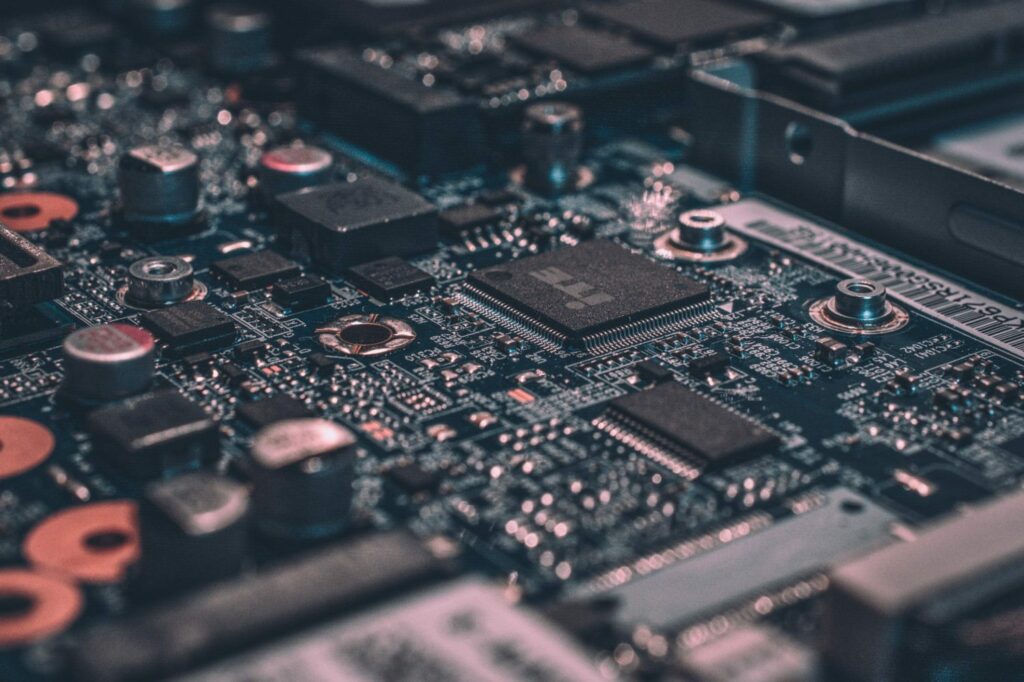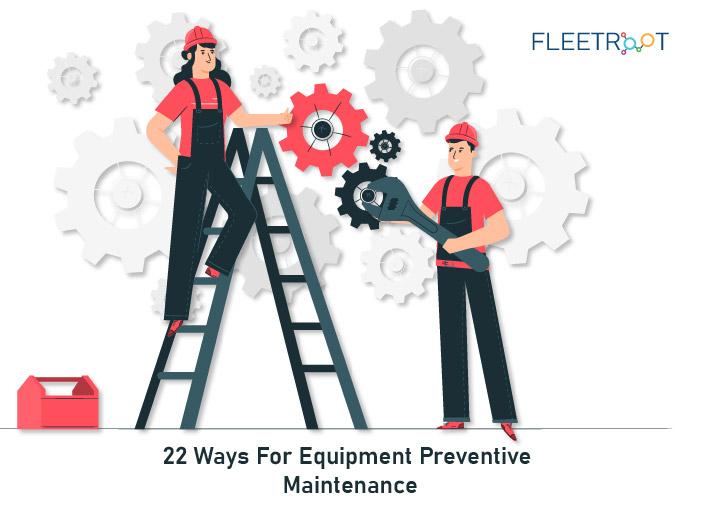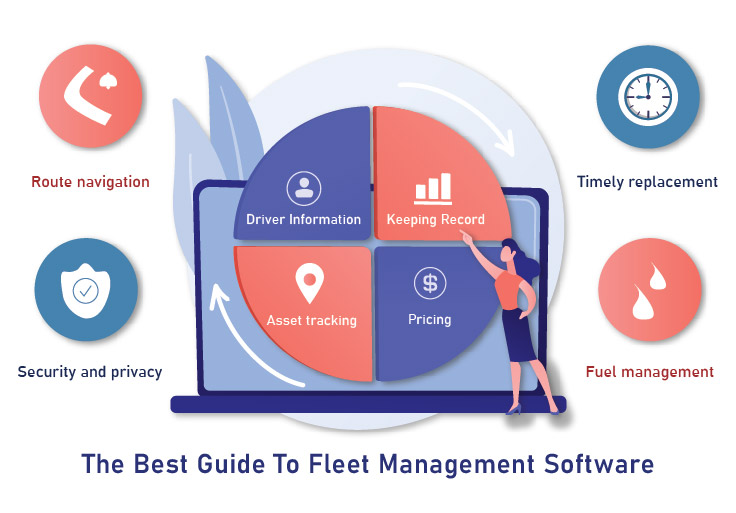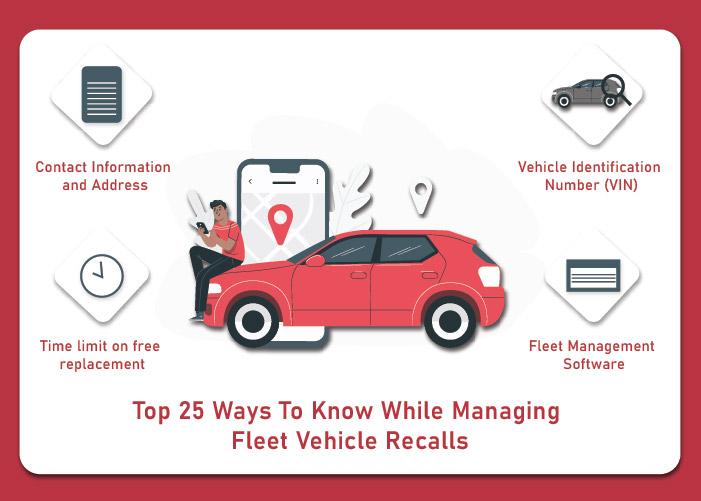
In most cases, fleet owners fall back on maintenance as a reaction to mishaps or dysfunctions in their equipment.
This approach to maintenance is called reactive maintenance (RM).
More than 55% of companies that employ heavy and light machinery use this approach.
The reason for this is that it appears to be the least expensive way of maintenance.
However, studies show that in the long run, due to the constant degradation and repair of machines in RM, they break down faster.
Hence RM costs more, and is less efficient, than other kinds of maintenance like preventive and predictive maintenance.
In this article, you will learn more about what is preventive maintenance, as well as it’s best practices.
What is preventive maintenance?
As the name suggests, preventive maintenance (PM) is a maintenance approach that depends on a regular maintenance routine to prevent any dysfunctions before they happen.
Around 31% of businesses apply this approach in order to avoid long-term losses.
The cost savings in a PM program are estimated to be 12% to 18% over an RM program.
In order to start a successful PM program, there are a number of things you need to take care of. Some of them are listed below.
1. Record Service history
The first step toward starting a PM program would be to start documenting all the past issues, repairs, and check-ups of your equipment.
This will help you understand the behavior of each machine.
Depending on the frequency of past breakdowns, a customized maintenance routine can be made for each piece of equipment.
2. Ask the operators
Often, knowing a machine’s service history is not enough to understand its status.
In order to get all the information, it is imperative to get the machine operators’ inputs on the subject.
Since they operate the equipment on a daily basis, machine handlers would be able to give you first-hand information about the details – for example, a car driver would be aware of the jamming of a certain car window during the monsoon season.
3. Maintain a detailed checklist
It goes without saying that maintenance of a large array of equipment is not without its own set of problems.
One of these is management.
While planning a PM program, a number of people have to work together to perform many tasks that would contribute to the overall maintenance of your machines.
In order to manage the numerous tasks required for each machine, maintaining a sophisticated and well-designed checklist is necessary.
Simply writing notes by hand as they come to you might not cut it.
4. Observe fluids and lubrication
Another key factor in gauging the condition of your equipment is observing its fluids.
These include coolant, fuel, engine oil, and hydraulic fluid.
Based on their quality and quantity consumed, one can gain valuable insights into the condition of various parts of the machine.
5. Oil Analysis
An important part of all lubricated systems is their oil.
Oil analysis is a process through which an oil sample is tested for contamination and debris that could lead to increased wear and tear in a machine.
Oil Analysis can also be used to monitor the additives in the oil.
If the necessary additives are lower than the expected ratio, the oil can then be ‘sweetened’ by increasing the ratio of these additives. On the same principle, coolant sampling can be used for cooling systems.
6. Keep an Inventory
In order to keep accurate records of all equipment maintenance history, and to keep a detailed checklist, you must code and inventory all your equipment.
Smaller companies often overlook the importance of coding all the equipment.
However, no matter how small or big your inventory is, maintaining a standard format would allow all stages of the maintenance to be recorded digitally and could help in the automation of procedures.
It could also reduce misunderstandings among all the teams involved with maintenance and use.
7. Develop a procedure
Forming a PM procedure simply means developing a order and flow of tasks, sort of like a blueprint for the system of maintenance.
For example, some companies start with scheduling, i.e., developing maintenance routines, keeping the record of all the tasks executed and finally an inspection to verify the completion of all maintenance.
8. Prioritize equipment
During the maintenance period, prioritize which equipment is heavier that requires more work and is most important to run the business.
This will reduce downtime and maximize productivity even during that period.
Also, prioritizing urgent issues over routine issues could reduce the risk of mishaps and accidents.
9. Assemble a team
Assembling and training a team specifically for maintenance can go a long way to ensure consistency in its quality and regularity.
You must invest in training the team to gather information from the recorded data, find patterns, and determine a course of action that is logistically sound.
10. Analyzing machine behavior
Though this falls under predictive maintenance, analyzing machine behavior over time can also help greatly with preventive maintenance.
The point of recording data at every step of the preventive maintenance procedure is to observe, find patterns in machine behavior, and analyze them.
For example, if B finds that every spring his car’s engine has trouble picking up the speed, it could be for a number of reasons.
After analyzing his data carefully he would find that the one week of extreme cold before spring caused his engine to freeze and break the ice continuously.
In this case, preventive maintenance would suggest servicing his car at the end of every winter and before spring to avoid its excess wear and tear.
11. Adjusting Schedule
Preventive Maintenance usually depends on a set routine to function.
However, it is based on data at its core.
As future data changes and shifts, so should your routines.
While adopting a Preventive Maintenance program, always be open to change, and adjusting your schedule to accommodate the shifting data.
An outdated Preventive Maintenance might even cause harm since it doesn’t acknowledge the change.
12. Inspection programs
Put together a team to inspect and test machines after the maintenance.
Whether or not they are mandatory in your country, safety inspections are always a good idea.
Everyone is prone to error and inspecting machines after the maintenance will help you avoid unforeseen losses.
13. Analyze dysfunctions
When a machine or piece of equipment fails, it is important to know more about the source of the dysfunction.
Usually, there is the pressure to repair a broken machine and put it back into the grind.
In such cases, maintenance personnel only have time to fix the immediate issues.
However, it is entirely possible that this dysfunction was only a symptom of a much larger issue with the machine.
14. Tracking
A very good practice for preventive equipment maintenance is tracking all components and equipment.
This can be done with the use of sensors and detectors paired with asset or fleet management software.
Its tracking features can, not only help you detect dysfunctions, but also help you detect it before it occurs.
Setting customizable intelligent alerts for the different components of a machine can save a lot of downtimes later.
15. Diagnostic technology
Paired with the tracking feature that collects data, diagnostic technology can assimilate data and identify the underlying problem.
Larger businesses especially, ones that own a lot of equipment would be benefited by diagnostic technology as it would eliminate the time required to manually diagnose the issue through testing.
16. Training employees
Daily maintenance is a significant contributor in preventive maintenance programs.
Simply put, it is the mindful handling of machinery.
As a fleet/factory owner, make it a policy to train all employees in machine handling.
Rash or wrongful handling of machinery could not only be detrimental to the health of the machine but also that of the handler.
The first step toward preventive maintenance is controlling the daily wear and tear of your equipment.
17. Types of dysfunctions
There are three primary types of dysfunctions – gradual, intermittent, and sudden failure.
Gradual dysfunctions can be addressed by training employees to reduce the wear on machinery and reporting the deterioration of equipment.
Intermittent dysfunctions, usually failures that are repetitive and persistent, can be addressed by data analysis and the use of diagnostic technology.
Sudden dysfunctions, usually without any prior notice can be easily diagnosed but are difficult to be prepared for.
In such cases, a pre-assembled and trained maintenance team is the best bet for speedy service.
18. Causes for dysfunction
The most common reasons for dysfunctions are mechanically induced, thermally induced, or it could be miscellaneous reasons. A mechanical dysfunction could be a simple malfunction in the mechanics of the machinery.
It is usually easy to identify and fix.
Thermally induced failures, as the name suggests, are caused due to temperature changes, or exposure to an extreme temperature, for example, freezing machinery in the winters or overheating when exposed to fire/sunlight.
Miscellaneous dysfunctions could have a variety of reasons, many of which are difficult to diagnose.
Practices that would aid your Preventive Maintenance program are as under:

1. Read Equipment manual
Reading the equipment manual will help you identify the concept model of the machine, and help you discover all its features.
This will allow you to make optimal use of your machine.
Despite having technicians with a deep knowledge of mechanics, it is essential for you to know the basics of machine handling in order to supervise and manage your business maintenance.
It will also keep you informed about new updates and changes.
2. Adhere to recommended usage
In many cases, workers over time become complacent towards the handling of machinery and it could lead to negligence in following the protocol.
This would prove detrimental to the overall well-being of your equipment.
Hence it is necessary for you to regularly reinforce, the need to adhere to recommended factory standards.
Proper usage will not only increase the longevity of your equipment but also will give you the right to claim full warranty in case the machine underperforms.
3. Upgrade
Your data is constantly growing and expanding and so should your program.
As mentioned before, a preventive maintenance program is redundant if it is based on outdated data.
Keep upgrading your system on a regular basis after the thorough analysis of gathered data, so as to keep up with your machines.
Preventive maintenance depends on forming a routine around the machine behavior.
As you apply these practices to your program, you can always choose to upgrade to predictive maintenance.
Predictive maintenance is simply a more evolved form of preventive maintenance.
It depends heavily on the gathering and analysis of data to predict dysfunctions before their onset.
That predictive maintenance costs more is a popular myth.
Around 12% of businesses that use light and heavy machinery use the predictive approach.
It has 8% to 12% cost savings over a Preventive Maintenance program.
Since predictive maintenance relies on big data analysis, you would be wise to transition to a more technological approach to maintenance by using the Best Fleet Management Software (FMS).
Using features like tracking, diagnostics, and intelligent alerts, you can monitor the status of your equipment at all times, thus, not having to subscribe to a set routine.
This would help you avoid the slight extra costs that a preventive maintenance program would bring in.
Take your preventive maintenance program one step further by transitioning to Fleet Management System.
In order to easily maintain your equipment, start your free trial today
Did you find this article helpful?
Would you be interested to read more articles like this?
Please let us know your thoughts in the comments below.




